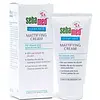What's inside
What's inside
 Key Ingredients
Key Ingredients

 Benefits
Benefits

 Concerns
Concerns

 Ingredients Side-by-side
Ingredients Side-by-side

Water
Skin ConditioningGlycerin
HumectantCyclopentasiloxane
EmollientBetaine
HumectantDimethicone
EmollientC12-15 Alkyl Benzoate
AntimicrobialPolyacrylamide
Phenoxyethanol
PreservativeCetearyl Olivate
C13-14 Isoparaffin
EmollientSorbitan Olivate
EmulsifyingDimethiconol
EmollientPhenyl Trimethicone
Skin ConditioningLaureth-7
EmulsifyingCarbomer
Emulsion StabilisingDisodium EDTA
Tocopheryl Acetate
AntioxidantUrea
BufferingParfum
Masking3-O-Ethyl Ascorbic Acid
Skin ConditioningButylene Glycol
HumectantCaprylyl Glycol
EmollientPotassium Hydroxide
BufferingSodium Citrate
BufferingBenzophenone-4
UV AbsorberLimonene
PerfumingDipropylene Glycol
HumectantAscorbyl Tetraisopalmitate
AntioxidantDimethicone Crosspolymer
Emulsion StabilisingBenzyl Benzoate
AntimicrobialHexyl Cinnamal
PerfumingLinalool
PerfumingButylphenyl Methylpropional
PerfumingBenzyl Salicylate
PerfumingCitrus Junos Fruit Extract
Skin ConditioningCitral
PerfumingHydroxycitronellal
PerfumingDenatonium Benzoate
MaskingWater, Glycerin, Cyclopentasiloxane, Betaine, Dimethicone, C12-15 Alkyl Benzoate, Polyacrylamide, Phenoxyethanol, Cetearyl Olivate, C13-14 Isoparaffin, Sorbitan Olivate, Dimethiconol, Phenyl Trimethicone, Laureth-7, Carbomer, Disodium EDTA, Tocopheryl Acetate, Urea, Parfum, 3-O-Ethyl Ascorbic Acid, Butylene Glycol, Caprylyl Glycol, Potassium Hydroxide, Sodium Citrate, Benzophenone-4, Limonene, Dipropylene Glycol, Ascorbyl Tetraisopalmitate, Dimethicone Crosspolymer, Benzyl Benzoate, Hexyl Cinnamal, Linalool, Butylphenyl Methylpropional, Benzyl Salicylate, Citrus Junos Fruit Extract, Citral, Hydroxycitronellal, Denatonium Benzoate
Water
Skin ConditioningAloe Barbadensis Leaf Juice
Skin ConditioningC12-15 Alkyl Benzoate
AntimicrobialDiethylhexyl Carbonate
EmollientSodium Polyacrylate
AbsorbentPanthenol
Skin ConditioningNiacinamide
SmoothingFaex Extract
Skin ConditioningAesculus Hippocastanum Seed Extract
Skin ConditioningAmmonium Glycyrrhizate
MaskingSodium Hyaluronate
HumectantZinc Gluconate
Skin ConditioningCaffeine
Skin ConditioningBiotin
AntiseborrhoeicAllantoin
Skin ConditioningCitric Acid
BufferingPropylene Glycol
HumectantSodium Hydroxide
BufferingParfum
MaskingPhenoxyethanol
PreservativeSodium Benzoate
MaskingWater, Aloe Barbadensis Leaf Juice, C12-15 Alkyl Benzoate, Diethylhexyl Carbonate, Sodium Polyacrylate, Panthenol, Niacinamide, Faex Extract, Aesculus Hippocastanum Seed Extract, Ammonium Glycyrrhizate, Sodium Hyaluronate, Zinc Gluconate, Caffeine, Biotin, Allantoin, Citric Acid, Propylene Glycol, Sodium Hydroxide, Parfum, Phenoxyethanol, Sodium Benzoate
 Reviews
Reviews

Ingredients Explained
These ingredients are found in both products.
Ingredients higher up in an ingredient list are typically present in a larger amount.
C12-15 Alkyl Benzoate is made up of Benzoic Acid and long chain alcohols. It has a low molecular weight.
C12-15 Alkyl Benzoate is an emollient and texture enhancer. Due to its solubility, it is often used in sunscreens to help evenly distribute active ingredients.
As an emollient, C12-15 Alkyl Benzoate helps soften and hydrate your skin. Emollients create a film on your skin that traps moisture within.
This ingredient has been reported to cause eye irritation.
Learn more about C12-15 Alkyl BenzoateParfum is a catch-all term for an ingredient or more that is used to give a scent to products.
Also called "fragrance", this ingredient can be a blend of hundreds of chemicals or plant oils. This means every product with "fragrance" or "parfum" in the ingredients list is a different mixture.
For instance, Habanolide is a proprietary trade name for a specific aroma chemical. When used as a fragrance ingredient in cosmetics, most aroma chemicals fall under the broad labeling category of “FRAGRANCE” or “PARFUM” according to EU and US regulations.
The term 'parfum' or 'fragrance' is not regulated in many countries. In many cases, it is up to the brand to define this term.
For instance, many brands choose to label themselves as "fragrance-free" because they are not using synthetic fragrances. However, their products may still contain ingredients such as essential oils that are considered a fragrance by INCI standards.
One example is Calendula flower extract. Calendula is an essential oil that still imparts a scent or 'fragrance'.
Depending on the blend, the ingredients in the mixture can cause allergies and sensitivities on the skin. Some ingredients that are known EU allergens include linalool and citronellol.
Parfum can also be used to mask or cover an unpleasant scent.
The bottom line is: not all fragrances/parfum/ingredients are created equally. If you are worried about fragrances, we recommend taking a closer look at an ingredient. And of course, we always recommend speaking with a professional.
Learn more about ParfumPhenoxyethanol is a preservative that has germicide, antimicrobial, and aromatic properties. Studies show that phenoxyethanol can prevent microbial growth. By itself, it has a scent that is similar to that of a rose.
It's often used in formulations along with Caprylyl Glycol to preserve the shelf life of products.
Water. It's the most common cosmetic ingredient of all. You'll usually see it at the top of ingredient lists, meaning that it makes up the largest part of the product.
So why is it so popular? Water most often acts as a solvent - this means that it helps dissolve other ingredients into the formulation.
You'll also recognize water as that liquid we all need to stay alive. If you see this, drink a glass of water. Stay hydrated!
Learn more about Water